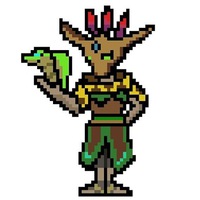
ЧТО ЕЩЁ,КРОМЕ ОРГОНОВ ДЫХАНИЯ ,ПОМОГАЕТ ПРОТОПТЕРАМ ВЫЖИТЬ БЕЗ ВОДЫ ?
 0
0
 0
0
Ответы на вопрос
 Внимание! Ответы на вопросы дают живые люди. Они могут содержать ошибочную информацию, заблуждения, а также ответы могут быть сгенерированы нейросетями. Будьте внимательны. Если вы уверены, что ответ неверный, нажмите кнопку "Пожаловаться" под ответом.
Внимание! Ответы на вопросы дают живые люди. Они могут содержать ошибочную информацию, заблуждения, а также ответы могут быть сгенерированы нейросетями. Будьте внимательны. Если вы уверены, что ответ неверный, нажмите кнопку "Пожаловаться" под ответом.

 0
0
 0
0

Adaptations of Prototera to Survive Without Water
In addition to using orgone breathing, prototera have developed several other adaptations to survive without water. These adaptations help them conserve moisture and minimize water loss in their bodies. Here are some of the key adaptations:
1. Cuticle and Exoskeleton: Prototera have a thick, waxy cuticle on their outer surface, which acts as a waterproof barrier. This cuticle helps to prevent water loss through evaporation. Additionally, their exoskeleton provides further protection against desiccation.
2. Behavioral Adaptations: Prototera exhibit various behaviors that help them conserve water. For example, they are active during the cooler parts of the day and seek shelter during the hottest periods to reduce water loss through evaporation. They may also burrow into the ground or hide in crevices to avoid direct sunlight and reduce water loss.
3. Reduced Metabolic Rate: Prototera can lower their metabolic rate to conserve energy and reduce water loss. By slowing down their physiological processes, they can minimize the amount of water they need to survive.
4. Efficient Water Utilization: Prototera have evolved efficient mechanisms for utilizing water. They have specialized structures in their bodies that allow them to extract and store water from their food sources. This helps them obtain the necessary moisture without relying solely on external water sources.
5. Ability to Enter Dormancy: Prototera have the ability to enter a state of dormancy, known as aestivation, during periods of extreme dryness. During aestivation, their metabolic activity decreases significantly, allowing them to conserve water and survive in harsh conditions.
These adaptations collectively enable prototera to withstand water scarcity and survive in arid environments. By combining orgone breathing with these adaptations, prototera are able to thrive in conditions where water is limited.
 0
0
 0
0
Топ вопросов за вчера в категории Литература
Последние заданные вопросы в категории Литература
-
Математика
-
Литература
-
Алгебра
-
Русский язык
-
Геометрия
-
Английский язык
-
Химия
-
Физика
-
Биология
-
Другие предметы
-
История
-
Обществознание
-
Окружающий мир
-
География
-
Українська мова
-
Информатика
-
Українська література
-
Қазақ тiлi
-
Экономика
-
Музыка
-
Право
-
Беларуская мова
-
Французский язык
-
Немецкий язык
-
МХК
-
ОБЖ
-
Психология
-
Физкультура и спорт
-
Астрономия
-
Кыргыз тили
-
Оʻzbek tili





















